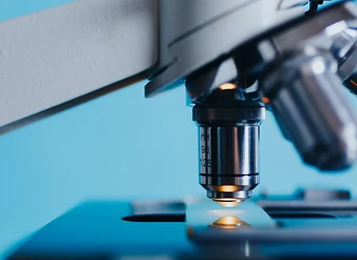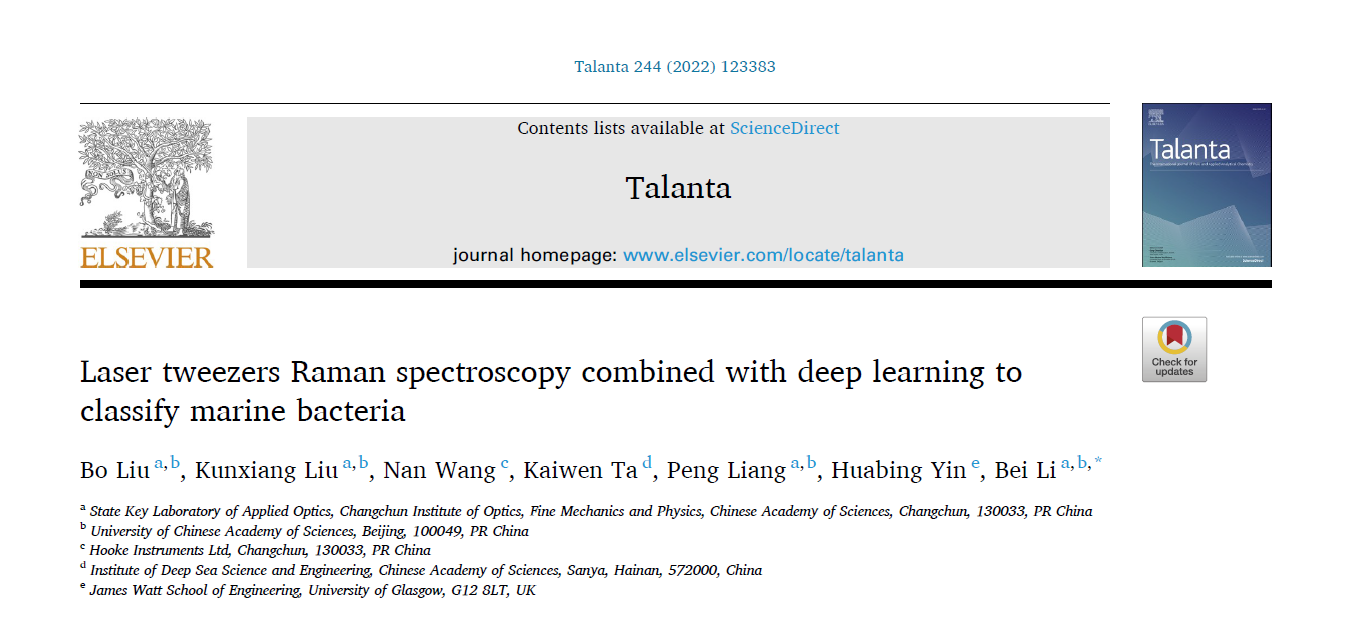

- Application Article
- Download
Hooke College

- About Us
- Team
- R & D and production
- Join Us
- Contact Us
- Qualification honor




In March 2022, the team of Bei Li, researcher of the Institute of Changguang, Chinese Academy of Sciences, and the team of Professor Huabing Yin, University of Glasgow, United Kingdom, applied D100 of HOOKE INSTRUMENTS, combined with optical tweezers capture and manipulation technology, to establish a single-cell Raman recognition and sorting technology for deep-sea microorganisms, providing a valuable method for the research and development of deep-sea microbial resources. The results were published in talanta under the title of "laser tweeters Raman spectroscopy combined with deep learning to classifymarine bacteria".
Rapid identification of marine microorganisms is critical in marine ecology, and Raman spectroscopy is a promising means to achieve this. Single cell Raman spectra contain the biochemical profile of a cell, which can be used to identify cell phenotype through classification models. However, traditional classification methods require a substantial reference database, which is highly challenging when sampling at difficult-to-access locations. In this scenario, only a few spectra are available to create a taxonomy model, making qualitative analysis difficult. And the accuracy of classification is reduced when the signal-to-noise ratio of a spectrum is low. Here, we describe a novel method for categorizing microorganisms that combines optical tweezers Raman spectroscopy, Progressive Growing of Generative Adversarial Nets (PGGAN), and Residual network (ResNet) analysis. Using the optical Raman tweezers, we acquired single cell Raman spectra from five deep-sea bacterial strains. We randomly selected 300 spectra from each strain as the database for training a PGGAN model. PGGAN generates a large number of high-resolution spectra similar to the real data for the training of the residual neural network. Experimental validations show that the method enhances machine learning classification accuracy while also reducing the demand for a considerable amount of training data, both of which are advantageous for analyzing Raman spectra of low signal-to-noise ratios. A classification model was built with this method, which reduces the spectra collection time to 1/3 without compromising the classification accuracy.
The paper links:
BoLiu, Kunxiang Liu, Nan Wang, Kaiwen Ta, Peng Liang, Huabing Yin, Bei Li, Lasertweezers Raman spectroscopy combined with deep learning to classify marinebacteria,Talanta,2022,123383,ISSN0039-9140,doi:10.1016/j.talanta.2022.123383.

+86-431-81077008
+86-571-86972756

Building 3, Photoelectric Information Industrial Park, No.7691 Ziyou Road, Changchun, Jilin, P.R.C
F2006, 2nd Floor,South Building, No. 368 Liuhe Road, Binjiang District, Hangzhou, Zhejiang,P.R.C

sales@hooke-instruments.com

COPYRIGHT©2022 HOOKE INSTRUMENTS LTD.ALL RIGHTS RESERVED 吉ICP备18001354号-1